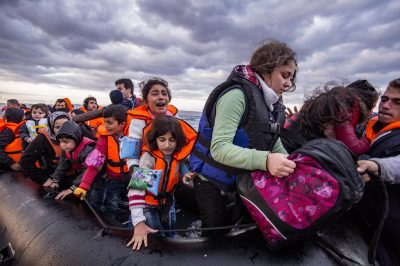Types of migration
In any book of international law, you normally see different types of migration. International lawyers and researchers normally talk about four categories that form a basis of classification.
A- Place:
Migration can be internal or external in terms of place. Internal migration is what takes place within a State. Whereas an external migration (or otherwise known as international migration) is a movement of people across a border (i.e. from one State to another)
B- Time:
Migration can also be categorized based on its duration, or whether a person’s movement is limited by term or not, to what is known as temporary migration or a permanent one. Permanent migration is when a person moves from his country or a place of habitual residence and does not wish to return, but a temporary migration is always limited by time.
C- Migration can also be voluntary or forced:
This classification is based on the circumstances and factors behind the movement of people. Thereby a forced migration is where a person (or a group of persons) is forced to move within a State or cross the border to another State.
Voluntary migration is done through the movement of a person or people willingly, within a State or across a border for reasons that are void of compulsion or coercion.
D- Legality:
Another basis for classifying migration, according to scholars of international law, is legality, through which migration can be either legal or illegal mode of movement. The notion of “legality” here refers to the legal characterization of a person’s entry; if it’s done by authorization then it’s legal and thereby the person will be considered a “legal migrant”.[2]
📚 Read Also: What’s Islam Stance On Human Rights?
However, the term “illegal” has attracted a lot of criticism from human rights lawyers and activists. And this, therefore, led to the usage of other terms such as “irregular migration” or “non-documented migrant”[3], though the usage of “illegal migration or illegal migrant” is still rampant.
Migration in Islamic law
In line with the juristic maxim “al-hukm yadur maha ilatihi nafyan wa ithbaatan…”[4] [rule of law is tied to its illah (legal cause) either through a negative action or a positive one], it’s a well-established fact that rules in Islamic law are based on causes and factors that stand as sine qua non for conducts or actions.
So in determining the validity or legality of certain conduct, Islamic law attaches great importance to causes leading to that conduct, which are to be factored in when determining the hukm (rule of law) applicable. This is also based on a corollary maxim: “iza wujidat al-ila, wujida al-hukm” [rule of law exists with the existence of the al-`illah (legal cause) and is eliminated with its elimination].
Applying the above jurisprudence to migration, it’s clear that causes and motives are also considered when determining an applicable rule of law on migration.
In supporting this argument, scholars often refer to this Hadith:
“All deeds and actions are (judged) by intentions. So, whoever migrates for the sake of Allah and His Messenger, his/her migration will be deemed (considered by God and be rewarded as such) for the sake of Allah and His Messenger…” (Al-Bukhari and Muslim)
By this, if a person’s migration is mainly to preserve life and soul, for instance, then this type of migration certainly falls within the category of what is known in Islamic Law as the Objectives of Shariah [al-maqasid as-shariyyah], i.e. the main or long-term goals of the Islamic legislation, as well as the Five Necessities {al-kuliyyat al-khams], i.e. the five essential things that correlate perfectly with the main objectives of Shariah.
Thus, if a migration falls within the purview of what is mentioned above, then it’s ruling (hukm) will be different compared to a migration undertaken mainly for other reasons and purposes falling below this rank.
To be Continued
References:
[1] Prof. Ahmed Abu Wafa’a (Kitabul I`lam bi Qawaid Al-Qanoun al-Dawly wal Alaqat al-Dawliyah fi Sharihat al-Islam) “Islamic Rules of International Law and International Relations”, produced in series and published in 2001 (first edition), Al-Nahda Al-Arabiyah, Cairo, 1421AH/2001, pp. 420-421
[2] Report of the Global Commission on International Migration, Population and Development Review, Vol. 31, No. 4 (Dec. 2005), Published by Population Council, New York, US, Page 780، See also/ Marlou Schrover, Joanne Van Der Leun, Illegal Migration and Gender in a Global and Historic Perspective, IMISCOE Research Published by Amsterdam University Press, Amsterdam, 2008, pp. 9-10
[3] International Migration, Health & Human Rights, World Health Organization, Health & Human Rights Publication Series, Issues No 4, Dec. 2003, Geneva, Switzerland, p. 9.
[4] Majmuat al-fawaid al-bahiyyah ala manzhumat al-qawaid el-fiqhiyyah [Peerless Benefits of the Islamic Juristic Rules] by Abu Muhammad Salih ibn Muhammed ibn Hassan, Al-Umari al-Qahtani, Published in KSA by Al-Sumai for Printing and Publication, First Ed. 1420 AH/2000, p. 112.
Pages: 1 2

